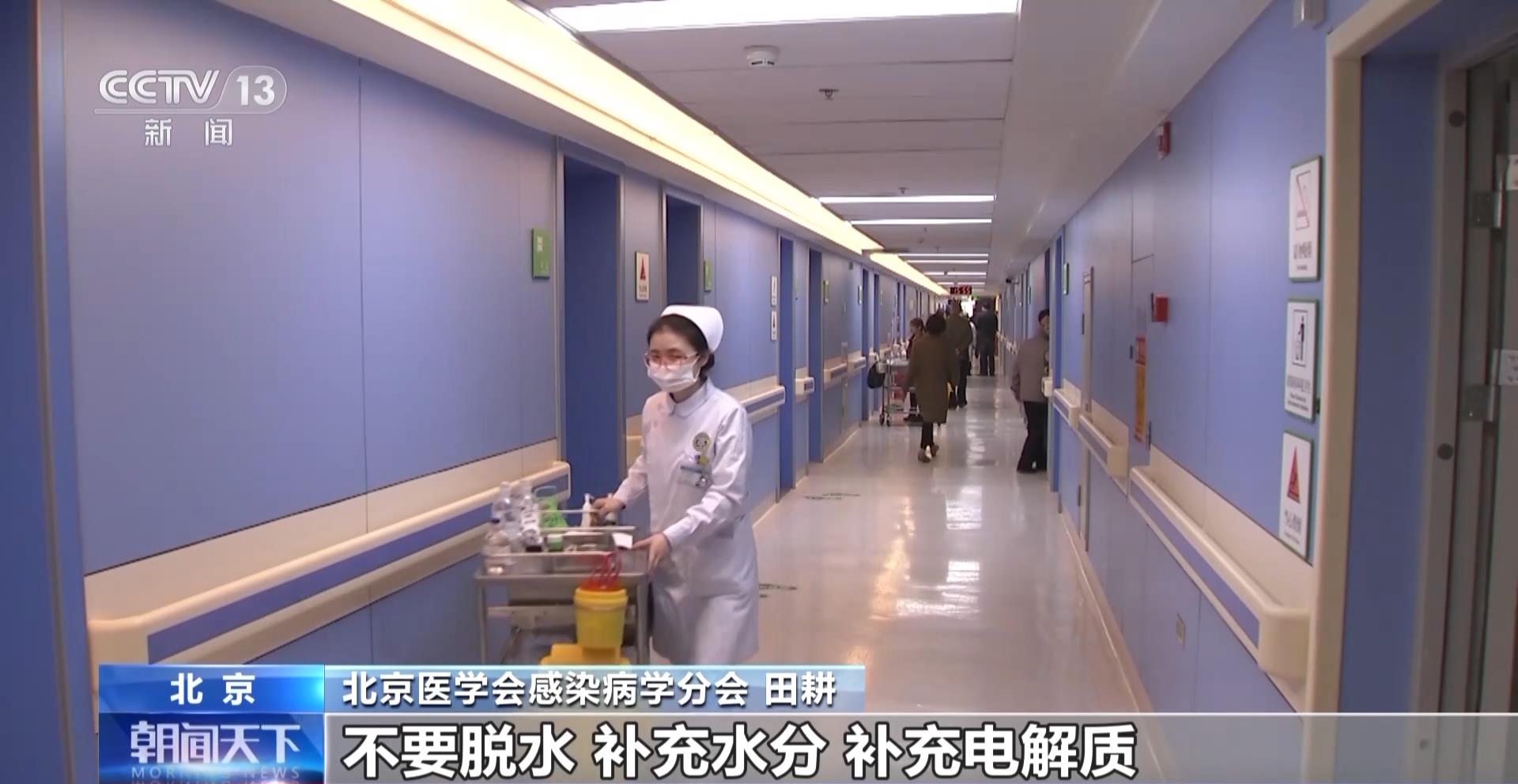The school season is coming and the children will return to school. It should be noted that autumn is the season of high incidence of infectious diseases, and some children have poor resistance and are particularly prone to get sick when they start school. What infectious diseases are prone to high incidence in the school season? How to prevent it?
Diarrhea in autumn is mostly caused by rotavirus infection.
Diarrhea in autumn is highly contagious, mostly caused by rotavirus infection, which is usually transmitted through fecal-oral route or respiratory tract. The incubation period is 2-3 days, which is often accompanied by cold symptoms at the beginning, and most children will have fever, followed by vomiting and diarrhea. Diarrhea in autumn usually lasts for 3 to 9 days, and the symptoms are the most serious in the first 3 days. Generally, it can heal itself in 5 to 7 days after onset. However, if you find that your child has obvious symptoms of diarrhea, it is recommended to go to the hospital immediately.

Tian Geng, Infectious Diseases Branch of Beijing Medical Association:We mainly adopt hand hygiene, and in addition, we should thoroughly disinfect the environment polluted by viruses in our diet, such as children’s toys, scratching doorknobs and so on. Another is that we don’t have specific drugs for this virus now. Clinically, it is mainly symptomatic treatment, but don’t abuse antibiotics, because antibiotics are mainly aimed at bacterial infections. Another is that we vaccinate high-risk children or teenagers, because this disease is more common in children and less common in adults, so these teenagers on campus are prone to infection.
Hand, foot and mouth disease is too high to be underestimated.
Hand, foot and mouth disease (HFMD) is a common infectious disease in children caused by various enteroviruses, which is common in preschool children. Hand, foot and mouth disease can occur all year round, with the highest incidence in summer and autumn.
Hand, foot and mouth disease is characterized by sore mouth, small herpes or small ulcer in hands, feet and mouth, which may be accompanied by fever, and most symptoms are not serious. The disease is often caused by enterovirus, which is contagious. It is mainly transmitted through the digestive tract such as fecal-oral route, and respiratory tract and close contact can also cause transmission. The disease usually recovered within one week, and there was no specific antiviral drug. When children have hand, foot and mouth disease, they should be isolated at home, and the living environment should be disinfected in time to avoid cross-infection; Rinse your mouth with normal saline or warm water before and after eating, and it is advisable to use liquid and semi-liquid foods as non-irritating foods; Keep local skin clean to avoid secondary skin infection caused by scratching rash; At the same time, we should observe the changes of the condition, and seek medical advice as soon as possible if there are symptoms such as convulsions and drowsiness.

Tian Geng, Infectious Diseases Branch of Beijing Medical Association:Because hand, foot and mouth disease is also caused by enterovirus, but enterovirus is Coxsackie virus, which has many serotypes, so it doesn’t mean that you get hand, foot and mouth disease once, and you will never get hand, foot and mouth disease again. Therefore, in this case, we should advocate prevention, because it is an infectious disease in the digestive tract after all. For children with low immunity, it is also very helpful to vaccinate the relevant hand, foot and mouth disease vaccine to prevent it from developing into a serious disease.
Norovirus infection needs timely hydration.
With the coming of the school season, many disease control departments reminded that acute infectious diarrhea caused by norovirus has entered the peak period. What is norovirus? What should we do if we are infected with norovirus? Listen to the experts ↓
Norovirus is a virus widely existing in nature. Moreover, it has the characteristics that the whole population is generally susceptible, and people of all ages may be infected. The virus can easily cause many people to concentrate on the disease in a short time in nurseries, kindergartens and other places. Norovirus infection is generally mild, the most common symptoms are vomiting and diarrhea, followed by nausea, abdominal pain, headache, fever, chills and muscle aches. Among them, children mainly vomit, and adults mostly have diarrhea. Norovirus infection leads to acute illness, which is a self-limiting disease. Most patients do not need treatment after onset, so they should replenish the water consumed during vomiting and diarrhea in time and rest for 2 to 3 days to recover. A few patients need to see a doctor in time because of serious symptoms of vomiting or diarrhea.

Tian Geng, Infectious Diseases Branch of Beijing Medical Association:Norovirus is also a digestive tract virus, which is also transmitted through fecal-oral route. The incubation period is generally 24 to 48 hours, and the clinical course is generally a self-limited process of two or three days. That is to say, we are symptomatic, such as nausea and vomiting, don’t dehydrate, replenish water and electrolyte. To prevent norovirus, one is our hand hygiene, and the other is to disinfect with chlorine-containing disinfectant in time if there is vomit.
Allergic rhinitis needs timely treatment.
According to statistics, the prevalence of allergic diseases in China has been on the rise in recent years. Take allergic rhinitis as an example. At present, the number of patients in China exceeds 200 million. Experts remind that autumn is the high incidence period of asthma and allergic rhinitis, which is generally caused by allergens. This is a common disease that seriously harms children’s health and must be highly valued.
Allergic rhinitis, also known as allergic rhinitis, is a common disease, which is mainly caused by the overreaction of individuals to specific allergens (also known as allergens) in the environment. These allergens can be pollen, dust, pet dander, mold spores, dust mites, food or drugs. The main symptoms of allergic rhinitis include stuffy nose, runny nose, itchy nose, sneezing, headache and itchy eyes. Many people think that allergic rhinitis attacks for a period of time, and forbearance will pass. In fact, this is a misunderstanding.

Peng Xiaolin, Professional Committee of Otolaryngology, China Association of Integrated Traditional Chinese and Western Medicine:If allergic rhinitis is not treated in a standardized way for a long time, it will often bring some secondary diseases. For example, otitis media, sinusitis, nasal polyps, and sleep apnea syndrome are some of its secondary diseases. In addition, allergic rhinitis has some accompanying diseases, such as allergic conjunctivitis, asthma and so on. According to statistics, about 40% of allergic rhinitis is accompanied by asthma. It is worth noting that the incidence of asthma in minors is often higher than that in adults.
According to experts, allergic diseases can occur all the year round or seasonally. Therefore, it is very important to control the disease and actively treat it.

Peng Xiaolin, Professional Committee of Otolaryngology, China Association of Integrated Traditional Chinese and Western Medicine:Look for your own allergen and try to avoid contact with it. However, there are often some people who can’t identify their allergens, so standardized medication is needed. This kind of standardized medication, I suggest that you can’t fish for three days and dry the net for two days to treat it, but you should adhere to the medication in a standardized and effective manner during your allergic period.
(CCTV reporter Li Bin Jun Li Kong Bingbing)
关于作者